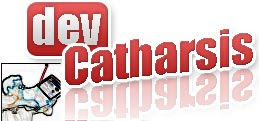Here are my notes on my last ESXi installation:
1. Download and burn CD from VMWare – the Dell customized version for a PowerEdge 2950
OPTIONAL BINARY
VMware ESXi 4.0 with Dell Customization
Version 4.0.0 | 181792 - 08/07/09
Binary (.iso) (417 MB)
Image for ESXi Installable that includes Dell customization.
md5sum: 0ff898e830a095abb2275181175e065e
2. Installing ESXi
Not much to say here. Basically set the password and configured the 1st network adapter.
3. Activated SSH (here’s where I’ve learned about this)
- At the console, hit ALT-F1
- type unsupported and hit <enter> (NOTE: you won’t see what your typing until you hit enter…)
- login
- edit /etc/inetd.conf
- uncomment the ssh line
- restart the services (services.sh restart)
We can now get the hell out of the datacenter :)
4. Install vSphere client
- HTTP the server, downloaded and installed vSphere client to my workstation
- On Windows 7 you have to fix it. Here the long and the short version
5. Install ftp server (here’s where I’ve learned about this)
- Downloaded OEM.tgz
- Uploaded to the datastore using the datastore browser
- On an SSH session, copied it to /bootbank/oem.tgz
- Added to /etc/inetd.conf:
- ftp stream tcp nowait root /usr/sbin/proftpd proftpd
- Reboot
And there you go, you’ve got an ftp server on your ESXi! For client ESXi has native support as:
- wget: wget ftp://user:password@source_ESXi_IP/path/file
- ftpput & ftpget
6. Install some precious tooling
- Your favorite ftp client
- VMWare Converter
Please remember:
- by default, VMWare Converter chooses flat files
- after uploading to the server your VMWare Server or Player versions, you’ll have to convert it: vmkfstools -d thin -i source.vmdk destination.vmdk.
Thanks for the support Rasteiro :)


No comments:
Post a Comment